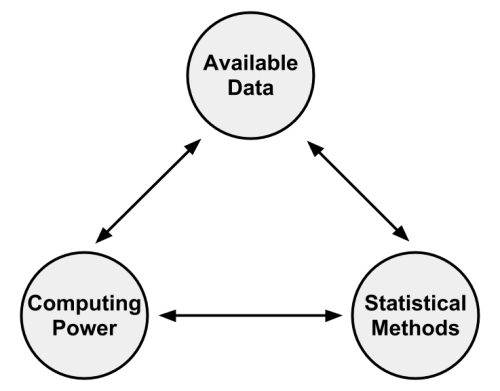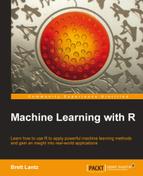If science fiction stories are to be believed, teaching machines to learn will inevitably lead to apocalyptic wars between machines and their makers. In the early stages, computers are taught to play simple games of tic-tac-toe and chess. Later, machines are given control of traffic lights and communications, followed by military drones and missiles. The machines' evolution takes an ominous turn once the computers become sentient and learn how to teach themselves. Having no more need for human programmers, humankind is then "deleted."
Thankfully, at the time of this writing, machines still require user input.
Your impressions of machine learning may be very heavily influenced by these types of mass media depictions of artificial intelligence. And even though there may be a hint of truth to such tales; in reality, machine learning is focused on more practical applications. The task of teaching a computer to learn is tied more closely to a specific problem that would be a computer that can play games, ponder philosophy, or answer trivial questions. Machine learning is more like training an employee than raising a child.
Putting these stereotypes aside, by the end of this chapter, you will have gained a far more nuanced understanding of machine learning. You will be introduced to the fundamental concepts that define and differentiate the most commonly used machine learning approaches.
You will learn:
- The origins and practical applications of machine learning
- How knowledge is defined and represented by computers
- The basic concepts that differentiate machine learning approaches
In a single sentence, you could say that machine learning provides a set of tools that use computers to transform data into actionable knowledge. To learn more about how the process works, read on.
Since birth, we are inundated with data. Our body's sensors—the eyes, ears, nose, tongue, and nerves—are continually assailed with raw data that our brain translates into sights, sounds, smells, tastes, and textures. Using language, we are able to share these experiences with others.
The earliest databases recorded information from the observable environment. Astronomers recorded patterns of planets and stars; biologists noted results from experiments crossbreeding plants and animals; and cities recorded tax payments, disease outbreaks, and populations. Each of these required a human being to first observe and second, record the observation. Today, such observations are increasingly automated and recorded systematically in ever-growing computerized databases.
The invention of electronic sensors has additionally contributed to an increase in the richness of recorded data. Specialized sensors see, hear, smell, or taste. These sensors process the data far differently than a human being would, and in many ways, this is a benefit. Without the need for translation into human language, the raw sensory data remains objective.
Tip
It is important to note that although a sensor does not have a subjective component to its observations, it does not necessarily report truth (if such a concept can be defined). A camera taking photographs in black and white might provide a far different depiction of its environment than one shooting pictures in color. Similarly, a microscope provides a far different depiction of reality than a telescope.
Between databases and sensors, many aspects of our lives are recorded. Governments, businesses, and individuals are recording and reporting all manners of information from the monumental to the mundane. Weather sensors record temperature and pressure data, surveillance cameras watch sidewalks and subway tunnels, and all manner of electronic behaviors are monitored: transactions, communications, friendships, and many others.
This deluge of data has led some to state that we have entered an era of Big Data, but this may be a bit of a misnomer. Human beings have always been surrounded by data. What makes the current era unique is that we have easy data. Larger and more interesting data sets are increasingly accessible through the tips of our fingers, only a web search away. We now live in a period with vast quantities of data that can be directly processed by machines. Much of this information has the potential to inform decision making, if only there was a systematic way of making sense from it all.
The field of study interested in the development of computer algorithms for transforming data into intelligent action is known as machine learning. This field originated in an environment where the available data, statistical methods, and computing power rapidly and simultaneously evolved. Growth in data necessitated additional computing power, which in turn spurred the development of statistical methods for analyzing large datasets. This created a cycle of advancement allowing even larger and more interesting data to be collected.

A closely related sibling of machine learning, data mining, is concerned with the generation of novel insight from large databases (not to be confused with the pejorative term "data mining," describing the practice of cherry-picking data to support a theory). Although there is some disagreement over how widely the two fields overlap, a potential point of distinction is that machine learning tends to be focused on performing a known task, whereas data mining is about the search for hidden nuggets of information. For instance, you might use machine learning to teach a robot to drive a car, whereas you would utilize data mining to learn what type of cars are the safest.
